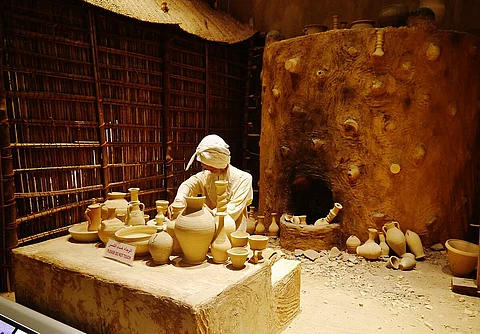
- Destinations
- Experiences
- Stay
- What's new
- Celebrating People
- Responsible Tourism
- CampaignsCampaigns
- Subscribe
- Buy Now

From ancient civilisations to Islamic heritage, Bahrain boasts a wealth of archaeological sites, forts, and museums that offer a glimpse into its fascinating past. These five places give a glimpse of Bahrain's historical side.
A UNESCO World Heritage Site, Bahrain Fort (Qal'at al-Bahrain) is one of the most significant historical sites in the country. Located on the northern coast, this ancient fort dates back to 2300 BCE and was once the capital of the Dilmun civilisation, one of the oldest trading cultures in the region. The site features layers of history, from Dilmunite, Portuguese, and Persian occupations, revealing Bahrain’s strategic importance. Visitors can explore the fort’s walls, towers, and chambers, and learn more about its history at the Bahrain Fort Museum, which houses artefacts discovered at the site.
The Dilmun Burial Mounds, dating back to 3000 BCE, are one of the world's largest and most remarkable burial sites. These massive mounds, spread across 21 archaeological sites, contain thousands of tombs from the ancient Dilmun civilisation. They reflect the elaborate burial practices of the time and provide insight into the belief systems of Bahrain’s early inhabitants. The most impressive mounds can be found in A’ali, where visitors can see large royal burial mounds. Some of these sites are still being excavated, offering an ongoing connection to Bahrain’s past
While not an archaeological site, Bab Al Bahrain in the heart of Manama offers a glimpse into Bahrain’s colonial and trade history. Built in the 1940s, this historic gateway was once the entrance to the city. Behind it lies the Manama Souq, one of the oldest markets in Bahrain, where traders have sold pearls, spices, textiles, and handicrafts for centuries. This area reflects Bahrain’s past as a major trading hub and is the perfect place for history lovers to experience the old-world charm of Bahrain’s commercial heritage.
The Shaikh Isa Bin Ali House in Muharraq is a must-visit for those interested in Bahrain's Islamic and royal heritage. Built in the 19th century, this beautifully preserved palace was the residence of Shaikh Isa bin Ali Al Khalifa, who ruled Bahrain from 1869 to 1932. The house showcases traditional Gulf architecture, with intricate wooden doors, carved plasterwork, and open courtyards designed to keep the interiors cool. Visitors can explore the ruler’s living quarters, meeting halls, and the distinct wind towers used for natural air conditioning. This historical home offers a rare look into the lifestyle of Bahrain’s ruling family in the pre-oil era.
No historical tour of Bahrain is complete without a visit to the Bahrain National Museum, the country’s most comprehensive cultural institution. Opened in 1988, the museum houses a vast collection of artefacts from ancient Dilmun to Islamic and modern times. Visitors can explore exhibits on Dilmunite seals, burial practices, traditional Bahraini life, and Islamic manuscripts. A highlight is the reconstruction of ancient burial chambers, giving a closer look at Bahrain’s prehistoric past. The museum also has waterfront views, making it an excellent place to explore Bahrain’s history in a scenic setting.
